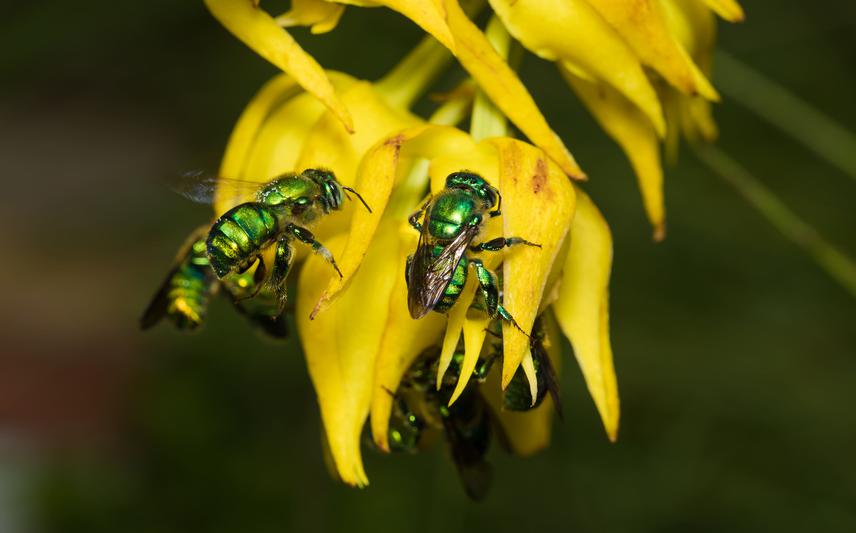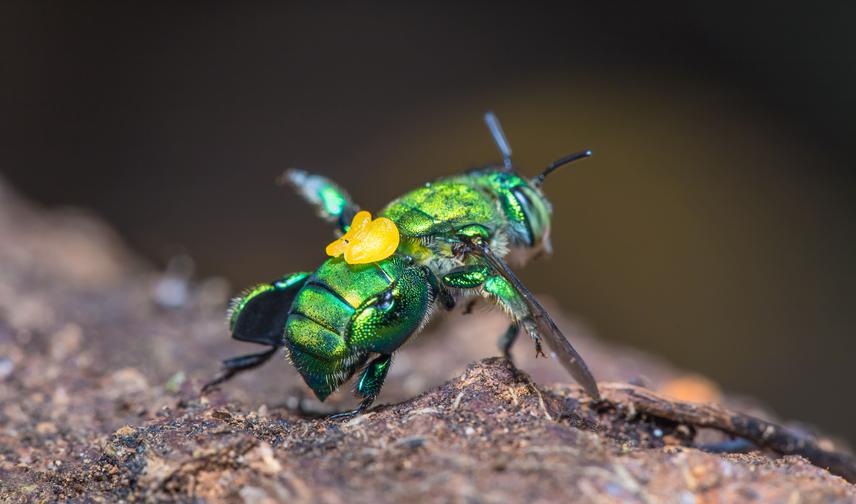Article featuring the project.
Álvaro Hernández Rivera
Other projects
13 Feb 2023
Urbanization of the Mexican Cloud Forest: Conservation and Knowledge of Orchids, Euglossine Bees and their Interactions
The study and conservation of biological interactions pose a significant challenge for modern ecology. In this project, we aim to unravel some of nature’s most fascinating and delicate interactions: the pollination of aromatic orchids by euglossine bees. In remnants of cloud forests, an extremely threatened ecosystem, we will report the interactions between euglossine bees and aromatic orchids, some of which have not been previously documented. We seek to understand the crucial role that orchid fragrances play in attracting these bees, especially for orchid species threatened under Mexican law that depend on euglossine bees for reproduction, but whose potential pollinators remain unknown.

Mormodes maculata flowers being visited by Euglossa sp. ©AHR.
To achieve this, we will analyse the profile of volatile aromatic compounds in the laboratory and monitor the interactions between native cloud forest orchids and euglossine bees in the field, focusing particularly on threatened species. This dual approach, combining laboratory and fieldwork, will provide better understanding of these complex ecological relationships. Furthermore, we firmly believe that raising public awareness can significantly impact the conservation of these delicate interactions. Learning about orchid scents can bridge the gap, fostering sensitivity, connection, and a sense of belonging, ultimately leading to behavioural changes in the population. We will carry out a series of outreach activities, including a photographic exhibition, radio/podcast appearances, the production of a video, a popular science article, and an educational workshop for children and youth. In all these activities, we will inform about the main risks these species face and the conservation measures that can be implemented at home, both for bees and orchids.

Euglossa hemichlora carrying pollen from Coryanthes picturata. ©AHR.
To undertake this ambitious project, we will establish a collaborative network between the Institute of Ecology and two orchidarium: the University of Veracruz Orchidarium and the Francisco Javier Clavijero Botanical Garden. This collaboration will grant us access to threatened orchids that are rarely found in the wild, ensuring the preservation and study of these crucial species. This project not only aims to advance scientific knowledge on the pollination of orchids by euglossine bees but also to foster collective awareness that leads to behavioural changes concerning the importance of conserving these ecological interactions, essential for the biodiversity and balance of cloud forest ecosystems.
Header: Stanhopea ruckeri, an endangered Mexican orchid. ©AHR.